First steps in the renewable sector? How to prepare your job interview
According to a study published by the International Renewable Energy Association (IRENA), the renewable sector exceeded 12.7 million jobs worldwide in 2021. The report also points out that, in the last decade, employment in renewables has grown from 7.3 million people in 2012 to 12.7 million in 2021.
These figures, however, fall short of the forecast for 2030, which is expected to reach 38 million professionals. All in all, jobs associated with the energy sector would total 139 million worldwide, including more than 74 million in energy efficiency, electric vehicles, storage systems and hydrogen. Therefore, there are many young talents who have seen the potential in this sector to specialise and become the future of this industry.
At Vector Renewables, we like to support these promising young people and we have open positions for students and juniors to learn from those with more experience and take their first steps. In this article, we wanted to talk to the talent acquisition department of Vector Renewables to share some keys to one of the biggest fears for these junior profiles: to bring out your best in a job interview, increase your self-confidence and leave a lasting impression on the interviewer.
Let's go point by point:
- Put on your trench coat: it's our turn to play Sherlock Holmes. Once you have applied for a job, it is important to frame it in an organisational context. Look for information about the company, its projects, locations, clients... Browse the website and identify its mission, vision, and values. Think about which ones you most identify with and make their purpose your own. Research their profile on social networks (Linkedin, blog, Facebook...) and even interact with their content. This knowledge will demonstrate a genuine interest in the organisation and help you understand the needs of the company and the job.
- Did you understand the requirements? Review the job description and take note of the key skills and knowledge. Analyse how your professional and personal experience, skills and achievements align with these requirements. This will help to indicate your suitability as a candidate for the job.
- Practice common questions (without sounding like a parrot disguised as a candidate): Although we do not recommend preparing a structured script of answers, we do think it is important to prepare possible answers to some questions based on your profile: How do you explain a period of inactivity? What motivates you to change sector? Why did you leave your previous job?
- Learn how to answer STAR answers. Answering interview questions using the STAR approach is important because it helps you structure your answers in a clear, concise and effective way. The STAR technique is an acronym that stands for:
S - Situation: The first step is to describe the situation, which should be clear and specific, avoiding general or ambiguous situations. It is important to frame it in a temporal and spatial context.
T - Task: Next, the mission or purpose of the situation should be identified.
A - Action: Next, the actions taken to address the situation should be clearly described.
R - Result: Finally, highlight the results derived from the action taken, what impact they had and what learning was drawn from them. - Role reversal: Time to ask the interviewer questions! It is common that at the end of the interview the candidate is given the opportunity to ask questions related to the job, the company or any other related issue. This can be a good time to highlight your interest in the job and the organisation, as well as your enthusiasm and proactive approach. Interesting questions could be about the company culture, growth opportunities, team dynamics...
- What next? Plan logistics and follow-up. Before the interview, it is important to make sure you know the place, date and time. And if it is a virtual interview, check that our picture and sound will work and that we have the access link. After the interview, a personalised thank you note, or email can be sent to express gratitude for the opportunity. This can demonstrate professionalism, appreciation and attention to detail, although it is important not to overwhelm the interviewer with these messages!
- Be careful with your attire! Choose appropriate attire that aligns with the company's dress code. Dressing professionally not only creates a positive first impression, but also increases personal confidence.
- Remember non-verbal communication. Non-verbal communication, including body language, facial expressions and eye contact, plays a crucial role in creating a positive impression, as well as complementing and reinforcing the verbal message being conveyed. Maintaining good posture and showing active listening skills, whether in an online or face-to-face process, significantly influences the interviewer's perception of the candidate, sending signals about professionalism and level of interest in the job, among others.
Ultimately, preparing for a job interview is a crucial step in the job search. By conducting thorough research, practising common and industry-specific questions and paying attention to non-verbal communication, you can improve your performance and stand out from other candidates. Preparation breeds confidence and confidence leads to success. you can contact our Human Resources specialists: Deborah da Prada, Mercedes Romero or Blanca Pérez. Good luck with your job interview!
When you subscribe to the blog, we will send you an e-mail when there are new updates on the site so you wouldn't miss them.

